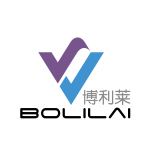
welding consumables
High temperature alloys
Oerlikon
Oerlikon is a leading manufacturer of welding materials and solutions, offering a range of products for various applications, including high-temperature alloys. Here are some of Oerlikon’s welding materials for P91, P92, B3, and B6 alloys:
P91 Welding Materials: P91 is a high-strength, low-alloy steel used for high-temperature applications, such as power generation and petrochemicals. Oerlikon offers several welding materials for P91, including:
- Cromocord 92: a metal-cored wire for gas shielded welding designed to provide excellent mechanical properties and toughness at high temperatures.
- Tigrod 92: a solid wire for TIG welding with high-temperature strength and creep resistance.
P92 Welding Materials: P92 is a high-strength, creep-resistant steel alloy used for high-temperature applications, such as power plants and chemical plants. Oerlikon offers several welding materials for P92, including:
- Cromocord 92W: a metal-cored wire for gas shielded welding designed to provide excellent creep resistance and toughness.
- Tigrod 92W: a solid wire for TIG welding with high-temperature strength and excellent creep resistance.
B3 Welding Materials: B3 is a nickel-molybdenum alloy with good corrosion resistance to hydrochloric acid and sulfuric acid. Oerlikon offers several welding materials for B3, including:
- Inconel B3: a solid wire for TIG welding with excellent corrosion resistance and good weldability.
- Tigrod 622: a solid wire for TIG welding with high corrosion resistance and good weldability.
B6 Welding Materials: B6 is a nickel-chromium-molybdenum alloy with excellent corrosion resistance and high-temperature performance. Oerlikon offers several welding materials for B6, including:
- Inconel 625: a solid wire for TIG welding with high-temperature strength and excellent corrosion resistance.
- Cromocord 625: a metal-cored wire for gas shielded welding designed to provide excellent corrosion resistance and high-temperature strength.
Oerlikon high temperature alloy series
| Standards | Chemical composition | Mechanical properties | Applications |
|---|---|---|---|
| P91 | C: 0.08-0.12% Si: 0.20-0.50% Mn: 0.30-0.60% P: ≤0.020% S: ≤0.010% Cr: 8.00-9.50% Mo: 0.85-1.05% V: 0.18-0.25% Nb: 0.06-0.10% N: ≤0.030% | TS:≥620 MPa YS:≥440 MPa Elongation:≥20% | Applied in welding high temperature and high pressure equipment,such as turbine and powerplant |
| P92 | C: 0.07-0.13% Si: ≤0.50% Mn: ≤0.50% P: ≤0.020% S: ≤0.010% Cr: 8.50-9.50% Mo: 0.30-0.60% V: 0.15-0.25% Nb: 0.04-0.09% N: ≤0.030% | TS:≥620 MPa YS:≥440 MPa Elongation:≥20% | Applied in welding high temperature and high pressure equipment,such as turbine and powerplant |
| B3 | Ni: 65.5-71.0% Cr: 26.0-30.0% Mo: 1.5-3.0% Fe: ≤2.5% W: ≤0.50% | TS:≥760 MPa YS:≥380 MPa Elongation:≥35% | Welding materials surrouned by acid,corrosive medium,alkaline media or seawater |
| B6 | Ni: 58.0-63.0% Cr: 15.0-21.0% Mo: 16.0-22.0% Fe: ≤3.0% W: 2.50-3.50% | TS:≥930 MPa YS:≥655 MPa Enlongation:≥15% | Welding materials surrouned by acid,corrosive medium,alkaline media or seawater |
For welding of P91 and P92 materials, here are some key points:
Ensure material dryness: Prior to welding, it is necessary to ensure that P91 and P92 materials are dry. This is because these materials are highly prone to moisture absorption, which can cause brittle cracking after welding. Control preheat temperature: Preheating is crucial for welding these materials and the preheat temperature must be strictly controlled. Generally, a preheat temperature between 200°C and 250°C is recommended. Select appropriate welding materials: High-chromium alloy welding materials should be selected for welding P91 and P92 materials to ensure that the welded joint has sufficient strength and toughness. Control welding speed: During the welding process, the welding speed must be controlled to ensure that the temperature in the welding area does not become too high, thus avoiding the formation of brittle cracking.
For welding of B3 and B6 materials, here are some key points:
Ensure material cleanliness: Prior to welding, it is necessary to ensure that the surfaces of B3 and B6 materials are clean. This is because these materials are highly prone to contamination, which can adversely affect the welding process. Control preheat temperature: Unlike P91 and P92 materials, the preheat temperature for B3 and B6 materials needs to be higher, with a recommended preheat temperature of around 300°C. Use appropriate welding materials: B3 and B6 materials require appropriate welding materials for welding. Typically, low-carbon or low-alloy steel welding rods are used for welding. Ensure appropriate welding conditions: During the welding process, it is necessary to ensure appropriate welding conditions, such as welding current, welding time, and arc length. This can ensure that the welded joint has sufficient strength and toughness.
If you have any further questions, please consult our team.
